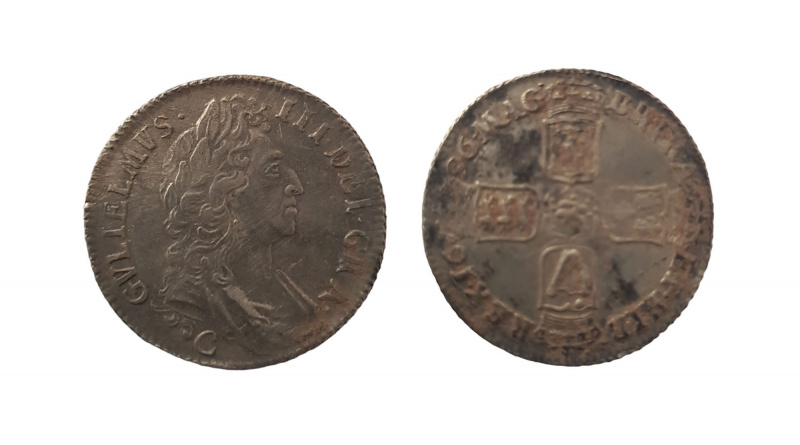Half crown of William III
The finder of these two coins asked to remain anonymous. He said they were unearthed on 26 April but as yet they had not been reported.
This is a very unusual find, for it is made up of two silver coins of William III, one a shilling and the other a halfcrown, both dated 1696 and both struck at the mint situated in Chester.
What became known as the Great Recoinage of English currency occurred in the middle years of the 1690s. Most of the old hammered money was called in and exchanged for far better looking coins that were made by machinery. Branch mints were set up at Bristol, Chester, Exeter, Norwich and York to assist in the huge amount of work involved in this exchange. The fledgling Bank of England, which was first established in 1694, lost a great deal of money through the recoinage. However, on the plus side, it led to a vast improvement in the overall appearance of English currency.
Valuation
Shilling of William III

Coin number one is a shilling with the first bust of William III on the obverse.
There is some weakness on GVLIELMVS and a scratch across the coin but the obverse is otherwise in VF+ condition. The reverse would grade VF. It’s a pity that the obverse is slightly defective but to a keen collector this coin should still be worth £150 to £180.
Halfcrown of William III

Coin number two is a halfcrown.
This has the ‘ordinary’ harp on the reverse, so it is number 3489 in the Standard Catalogue. This is an example of the rarest type of William III Chester mint halfcrown for 1696. The obverse would grade good VF but the reverse is only about VF with what appears to be some staining. It’s a handsome looking coin and probably the best William III halfcrown I have seen as a detecting find. If I was cataloguing it for sale at auction I’d set the pre-sale estimate at £500 to £600 and would expect it to sell for a figure within that range.
Valuation Service
If you would like your coin identified or valued, please read about my valuation service and contact me

